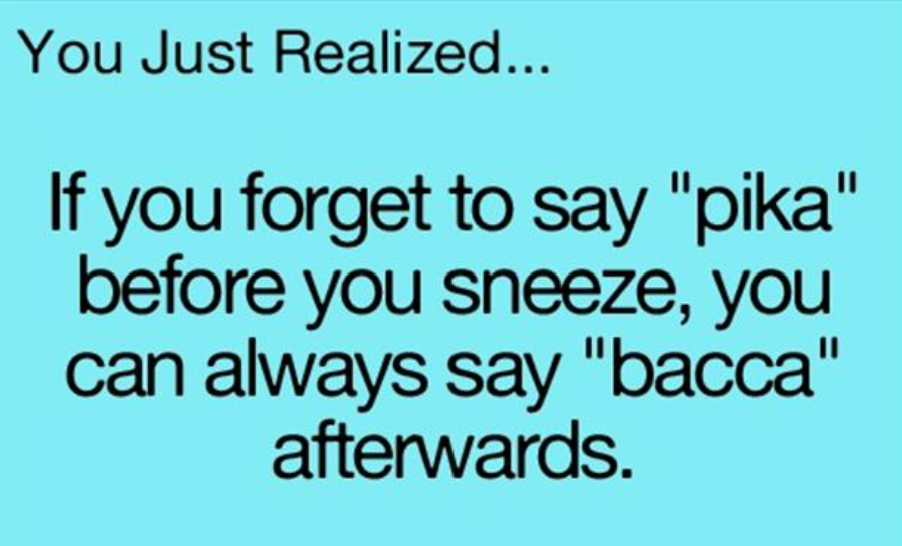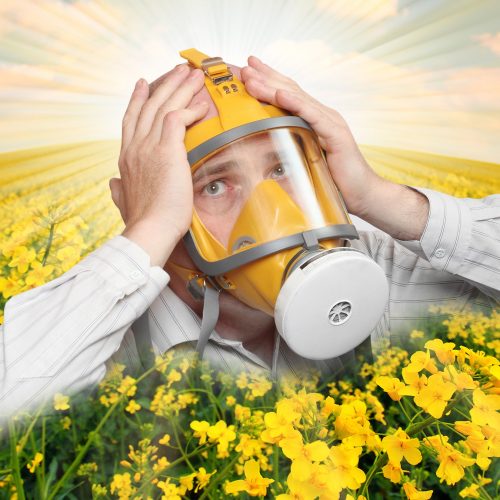I love the summer!! I spend my entire winter pretty much counting down the days for warmer weather and every year I seemingly forget the misery that can sometimes come with it – Hay Fever!!
I’ve had Hay Fever since I was 5 years old and back in the early 80’s very few people even knew what it was. I feel like it’s getting worse year on year and in the last couple of weeks I seem to be getting more extreme symptoms like fever, lightheadedness/dizziness and asthma. So what the hell has changed? Why is it affecting so many people now?
What is Hay Fever & Why is it getting worse?
Hay fever is a condition caused by an allergic reaction to pollen and now affects a significant portion of the UK population, both children and adults. Symptoms like fatigue, irritability, poor concentration and sleep disruption can substantially impact your ability to carry simple day to day tasks.
Recent climate changes of milder winters, early spring and dry summers have led to longer, more vigorous plant/pollen seasons. This means that Hay Fever sufferers are also now experiencing symptoms for longer, from early spring into late autumn.
The University of Manchester have carried out a study and have discovered that over the past 20 years, the prevalence of hay fever in the UK has risen by 33%. This increase is believed to have been caused by urbanisation, climate change, warmer temperatures, higher CO2 levels stimulating plant growth/pollen production, and an overall lengthening of pollen seasons.
Common Hay Fever Symptoms:
- Sneezing and coughing.
- A runny or blocked nose.
- Itchy, red or watery eyes.
- Itchy throat, mouth, nose and ears.
- Loss of smell.
- Pain around the sides of your head and your forehead.
- Headache
- Fatigue & Irritability
What can be done to relieve symptoms?
- Try to keep windows and doors shut as much as possible.
- If you are heading outside, wear wraparound sunglasses, a mask, or a wide brimmed hat to stop pollen getting into your nose and eyes.
- Shower and change your clothes after you have been outside to wash the pollen off. This is especially important before you head to bed as this will stop pollen from getting on to bedding and aggravating symptoms overnight.
- Put petroleum jelly (such as Vaseline) around your nostrils to trap pollen or on your cheeks to stop pollen going into your eyes.
- Vacuum regularly and dust with a damp cloth.
- Try to use a pollen filter in the air vents of your car or in your home air conditioning, and a HEPA filter in your vaccum cleaner.
Can local honey help with Hay Fever?
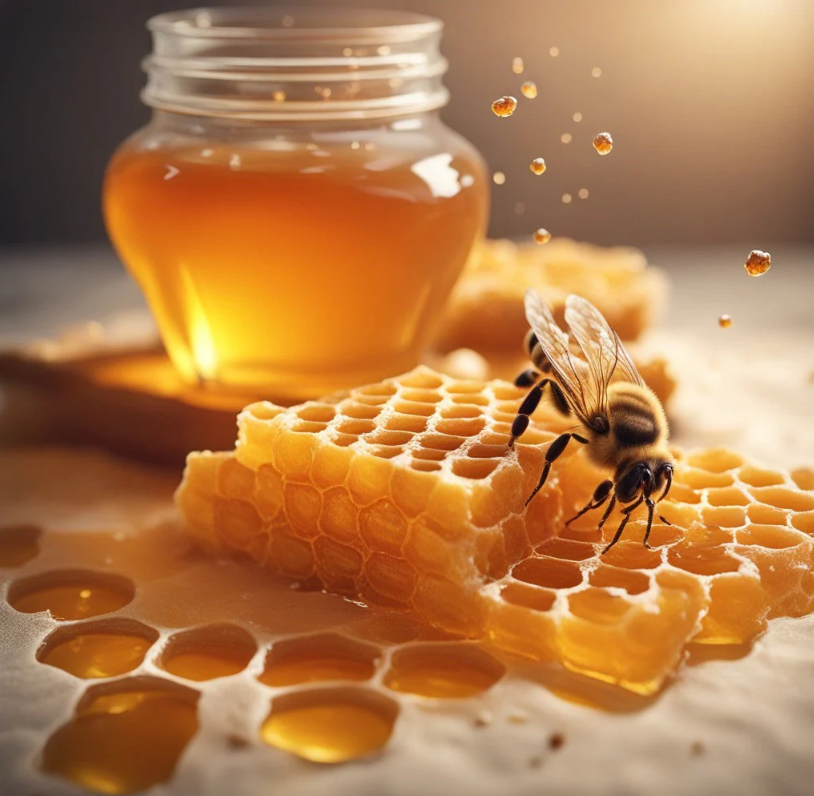
I’ve had many a conversation on this and it made sense to me initially that a small amount of pollen eaten a month or two before the summer, would surely help my immune system prepare for the upcoming Hay Fever season. I tried it a couple of times and although I really liked the honey, it made absolutely no difference to my symptoms.
After further research, I found that there is no scientific evidence that this method actually works. Hay Fever is nearly always caused by trees, grasses and weeds. Birch and grass amongst the most common triggers in the UK. Bees eat nectar and gather pollen from flowers, not these common triggers. Simply put. the pollens causing the allergies almost certainly aren’t in the honey, local or not.
Medication
Antihistamines

There are several different antihistamines that you can buy over the counter that should help alleviate symptoms. These include Cetirizine (Piriteze), Loratadine (Clarityn), Chlorphenamine (Piriton), Acrivastine (Benedryl) and Fexofenadine (Allegra). Most of these also come in liquid form for children.
Doctors have been recently advising that we take ‘second generation’ antihistamines that do not cross the blood-brain barrier and therefore do not cause drowsiness, such as Fexofenadine. In my view, I would suggest you see which one works best for you as side affects can impact people differently. For example, we take Chlorphenamine and have no side effects of drowsiness and Acrivastine makes me high as a kite (not great when you are about to host a meeting at work!)
If over the counter medications aren’t enough, then I would suggest you consult with your doctor who may be able to prescribe something stronger.
Antihistamines are a staple medication across all allergies, not just for hay fever. We always have plenty in the house and carry them when we travel in case of any reactions from food out and about.
Eye Drops
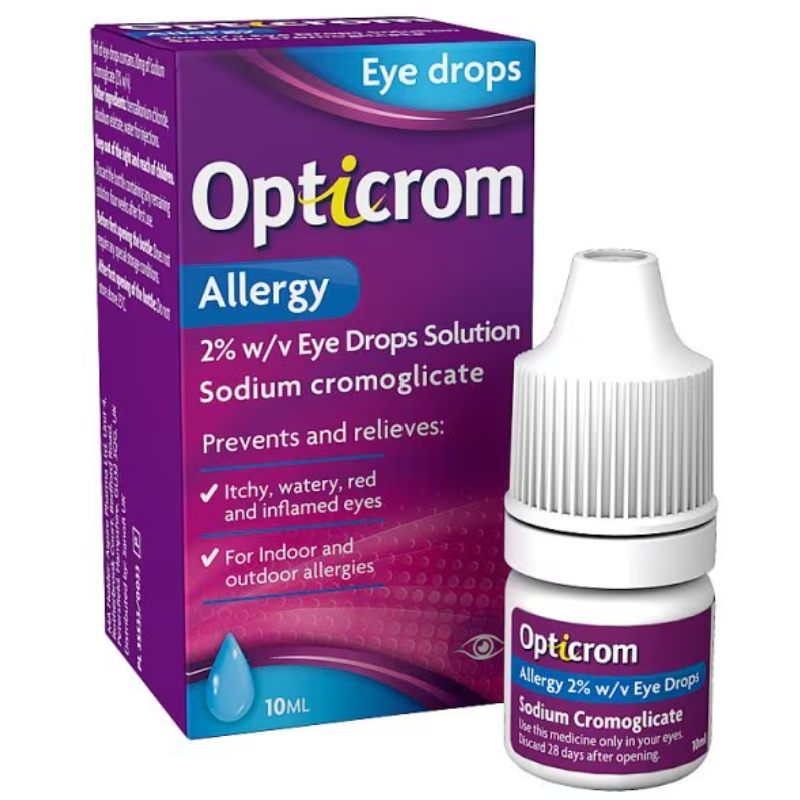
My eyes are often the worst affected by hay fever and it can sometimes look like I’ve had 5 rounds with Muhammad Ali! Opticrom eye drops are my second go to and really helps to alleviate symptoms. They drops can sting if you have been itching your eyes so I always take them if the pollen count is high, more as a preventative, rather than a reactive measure.
These can also be used on children over 6 years old. I used a bit of ‘tough love’ when using these on my daughter but I have been told that if your child isn’t great having eye drops then you can tilt their head back with their eyes closed, and drop in the corner of their eye. Gravity will then do the hard work and the droplet will makes it’s way into the eye.
Nasal Spray
Nasal sprays, such as Beconase can help with symptoms such as an itchy or blocked/runny nose. They contain a steroid (beclometasone) and can be purchased over the counter or prescribed by the doctor. You will need to use the spray regularly for it to work and it can take a few days to work fully. For some people it can take 2 weeks or more to get the maximum benefits.
Saline nasal sprays can be a good alternative if you are trying to avoid medicine, especially for younger children. They contain a mixture of salt and water and can be used as often as needed. They can also keep nasal passages from drying out which helps if you are prone to nose bleeds. They are safe and usually do not cause any side effects.
I have been using nasal sprays for years and it wasn’t until just recently that I realised that I have been administering it incorrectly and breathing in with each spray. This meant none of spray actually stayed within the nose and essentially lost effectiveness.
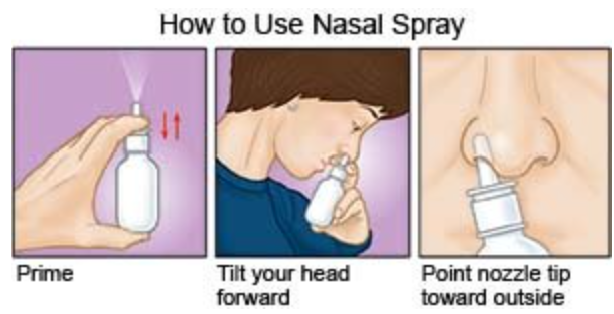
- Read the instructions carefully before you use nasal spray.
- Store nasal sprays at room temperature and away from heat, moisture, and direct light.
- Remove the cap and shake the bottle.
- Prime the bottle by spraying 1 time to get it ready.
- Blow your nose gently.
- Close 1 nostril by pressing your finger against the side of your nose.
- Bend your head forward slightly and carefully point the nozzle slightly toward the side of your nostril, away from the middle of your nose.
- Slowly breathe in through your nose and with your fingers press down on the widest part of the nozzle to squirt the spray once into your nostril (spray after you have breathed in)
- Breathe out slowly through your mouth.
- If possible, do not sneeze or blow your nose until a few minutes after you use the nasal spray.
- Follow steps 3 and 4 again to squirt a second spray into the same nostril if you need it.
Hay Fever Injections
Kenalog hay fever injections, also known as corticosteroid injections, were previously offered by the NHS as a treatment option for severe hay fever symptoms. However, in recent years, concerns have emerged regarding potential side effects and long-term risks associated with corticosteroid injections, so is no longer licensed for the treatment of hay-fever in the UK.
